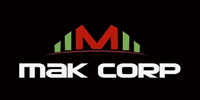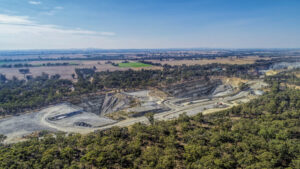Mineral sands stocks: what are they and why are prices going up?

Mineral sands stocks aren’t well understood by investors — but they make a good investment case with more than half of ASX players showing gains of 15 to 200 per cent in the past year.
Mineral sands are old beach sands that contain zircon, ilmenite and other minerals.
They’re used in just about anything you can think of that we need in everyday life.
Ilmenite is the main source of titanium dioxide, a white pigment used in paints, fabrics, plastics, paper, sunscreen, food and cosmetics.
At one point American doughnut giant Dunkin’ Donuts even used titanium dioxide to make the powdered sugar on its donuts appear whiter.
>> Scroll down for a list of ASX stocks with mineral sands exposure, courtesy of leading ASX data provider MakCorp
Zircon, meanwhile, has a high melting point, making it ideal for use in engines, electronics, spacecraft and the ceramics industry.
Iluka Resources (ASX:ILU) is probably the name that springs to mind when talking about mineral sands because it’s a $5 billion zircon producer.
But there are another 20 or so mineral sands miners listed on the ASX – fewer than the hoards of battery metals players, but enough to give investors something to think about.
Here’s a list of ASX stocks with mineral sands exposure, courtesy of leading ASX data provider MakCorp:
Scroll or swipe for full table. Click headings to sort
| ASX code | Company | Six-month price change (Jan 2) | 12-month price change | Price Jul 20 (intraday) | Market Cap |
|---|---|---|---|---|---|
| BPL | BROKEN HILL PROSPECTING | -0.144329896907 | 1.96428571429 | 0.083 | 12.3M |
| STA | STRANDLINE RES | 0.137931034483 | 1.75 | 0.165 | 46.3M |
| DRX | DIATREME RES | 0.5 | 1.4 | 0.024 | 27.2M |
| SFX | SHEFFIELD RES | 0.174603174603 | 0.423076923077 | 0.74 | 175.2M |
| AYR | ALLOY RES | 0.166666666667 | 0.4 | 0.007 | 10.2M |
| LRS | LATIN RES | -0.461538461538 | 0.4 | 0.007 | 16.7M |
| ATR | ASTRON | 0.184210526316 | 0.323529411765 | 0.225 | 27.6M |
| ILU | ILUKA RES | 0.106758080313 | 0.234972677596 | 11.3 | 4.9B |
| BSE | BASE RES | 0.115384615385 | 0.164658634538 | 0.29 | 327.0M |
| IMA | IMAGE RESOURCES | -0.115384615385 | 0.15 | 0.115 | 110M |
| ARO | ASTRO RES | 0 | 0 | 0.003 | 2.7M |
| TSL | TITANIUM SANDS (suspended) | 0 | 0 | 0.007 | 1M |
| RDM | RED METAL | -0.2 | -0.0769230769231 | 0.12 | 25.2M |
| AMD | ARROW MIN | -0.421052631579 | -0.153846153846 | 0.022 | 6.8M |
| BOA | BOADICEA RES | -0.46875 | -0.291666666667 | 0.085 | 4.5M |
| MLM | METALLICA MIN | -0.350877192982 | -0.327272727273 | 0.037 | 11.9M |
| MZI | MZI RES | -0.222222222222 | -0.475 | 0.105 | 27.2M |
| WPG | WPG RES | -0.25 | -0.583333333333 | 0.015 | 13.6M |
| OAR | OAKDALE RES | -0.451612903226 | -0.585365853659 | 0.017 | 1.1M |
More than half of ASX-listed mineral sands stocks have made gains in the past year — some tripling in value.
Broken Hill Prospecting (ASX:BPL), which has heavy mineral sands projects in the Murray Basin of south-east Australia, is the leader with a 196 per cent gain to trade at 8.3c on Friday.
Tanzania-focused Strandline Resources (ASX:STA) has climbed 175 per cent to 16.5c and Diatreme Resources (ASX:DRX), which is developing its flagship Cyclone zircon project in Western Australia, is up 140 per cent to 2.4c.
Diatreme says that in the future, premium quality zircon and titanium from its Cyclone project will be used to help jet turbines fly planes further and burn less fuel.
Mineral sands stocks are poorly understood
The problem is investors often don’t understand the value of mineral sands or what makes a good investment.
“I was doing a presentation in Melbourne and after the presentation two guys came up and said ‘man we really like the story, what the hell do you use your products for? We don’t understand mineral sands’,” says Patrick Mutz, the boss of emerging producer Image Resources (ASX:IMA).
“There are so many nuances to mining — especially in mineral sands, because it’s not gold, it’s got multiple products.
“The grain size of the deposit alone can make a difference in how good the project might operate.”
Mineral sands players need to do more to ediucate investors, Mr Mutz says.’
“It takes questions and answers and conversations – one-on-one, one-on-three or one-on-five”.
“We have to be an educator where we can, without stepping on toes or bashing the competition too much.
“We respect our competition and we know they’re going to make a go of it wherever they are. But it is ok to do reasonable comparisons for investors to understand and answer their question of ‘which one do I want to go with?’ ”
Image is developing its Boonanarring zircon-rich project, which lies 80km north of Perth in Western Australia.
The company is about halfway through building the open pit mine and processing facility and is on track to start producing in the final quarter of this year.
Zircon on the up
The project already has solid metrics, including a $235 million net present value, 125 per cent internal rate of return and 13-month payback.
And the economics are only going to get better because of the ever-increasing zircon price, Mr Mutz says.
The price was trading around $US1200 per tonne before it bombed at about $US900 per tonne in mid-2016.
Since then it has reversed the negative trend, climbing to just below $US1500 per tonne.
“We are very, very confident that the price is going to go up,” Mr Mutz said.
“I’m projecting about $1575. In fact, one of the other competitors, Tronox, has already moved their price up again and we think in fact I may be underestimating how far it’s going to move.”
Zircon will account for about 70 per cent of Image’s revenue.
The company expects to make margins of 61 per cent and 126 per cent in the first two full years of production, which would deliver roughly $150 million worth of earnings before interest, taxes, depreciation and amortisation.
To relate that to a gold mine – something that is a lot better understood – that is the equivalent of nearly 100,000 ounces at a gold price of $1600 per ounce.
“If you look at a gold project that can do 100,000 ounces per annum, you’d probably find that their market cap is between $300 and $400 million dollars, and while we’re comparable on revenue and higher margin, we’ve got a $100 million market cap,” Mr Mutz said.
“So this is part of the education process.”
Jumping hurdles
Meanwhile, MZI Resources (ASX:MZI) is already producing from its Western Australian operations.
The company has been working to increase the capacity of its Keysbrook and Picton operations to 5.25 million tonnes per annum (Mtpa) from 4Mtpa.
It faced a few hurdles in the ramp up to “steady-state” production, but expects to meet its previous total saleable production target of 70,000 to 80,000 tonnes for the 2018 financial year.
MZI’s Keysbrook mine is a major leucoxene deposit.
Leucoxene is a fine, granular alteration product of titanium minerals. Although it is not a recognised mineral species, the name leucoxene has been applied to products with a titanium content ranging from 70 per cent to 93 per cent.
Leucoxene is either sold for use in welding electrodes, which is a relatively small market, or as one of several feedstocks for titanium pigment plants.
Stockhead is proud to use MakCorp as a provider of great value, accurate and reliable data on ASX-listed mining stocks. For more information head to MakCorp’s website.

This article does not constitute financial product advice. You should consider obtaining independent advice before making any financial decisions.
UNLOCK INSIGHTS
Discover the untold stories of emerging ASX stocks.
Daily news and expert analysis, it's free to subscribe.
By proceeding, you confirm you understand that we handle personal information in accordance with our Privacy Policy.








